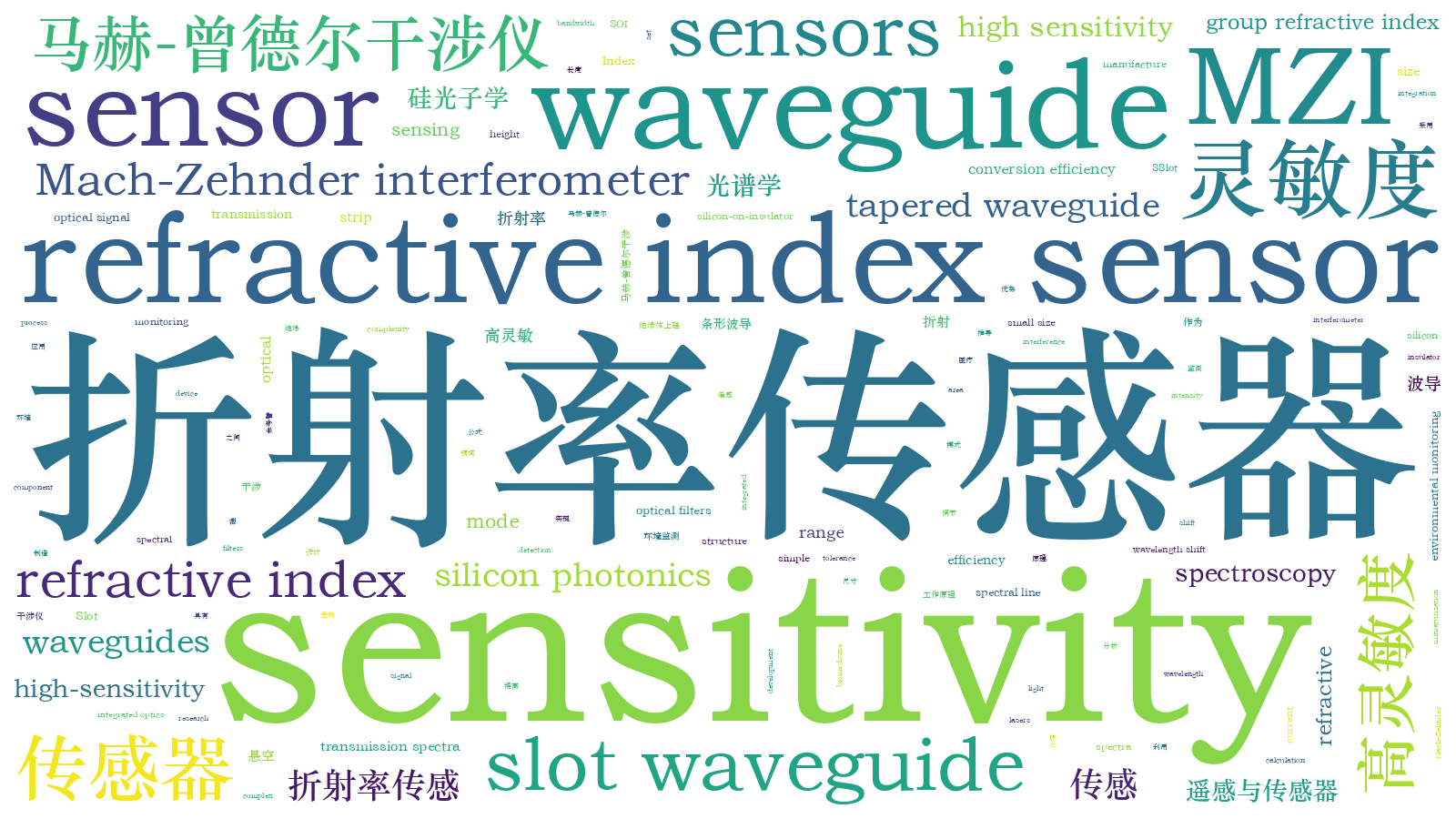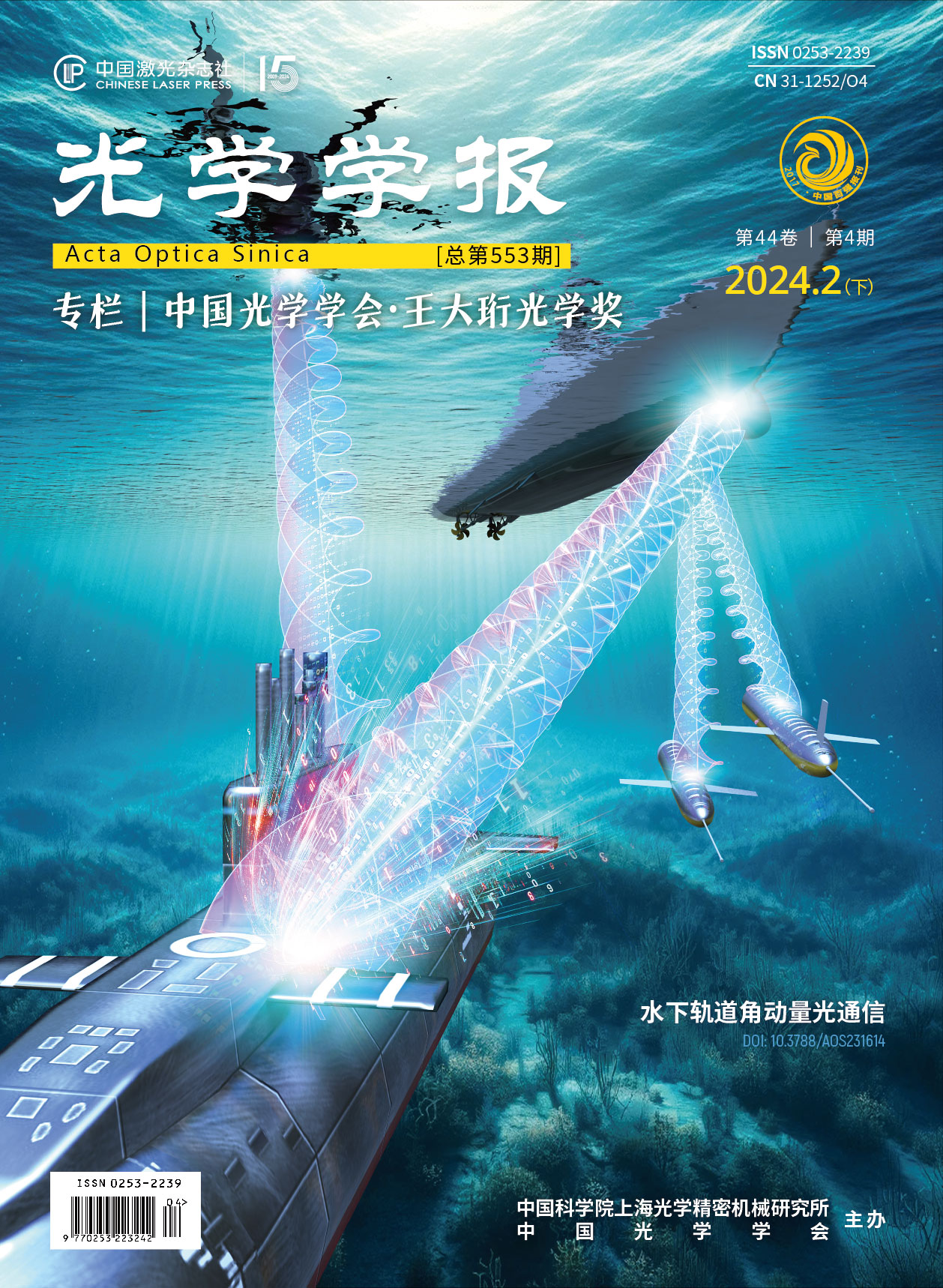基于悬空槽波导的高灵敏度折射率传感器
High-sensitivity, miniaturization, and integration sensors are still in great demand in medical detection, environmental monitoring, and other fields. One of the hot issues in the current research on sensors is to improve the sensitivity and reduce the size of sensors. Mach-Zehnder interferometer (MZI) is an important part of integrated optics, which is widely used in optical filters, optical lasers, optical sensors, and other fields. The refractive index sensor based on MZI has been widely utilized in sensing according to its advantages of simple structure, convenient manufacture, and large process tolerance. In general, MZI-based sensors implement sensing by detecting the variety of interference signals between the reference arm and the sensing arm. The proposed sensor schemes based on MZI usually have large sizes and complex structures. Therefore, the study of small-size and high-sensitivity MZI sensors is very suitable for the current development needs.
To improve the sensitivity of the sensor without increasing the complexity, we choose to add a new type of waveguide to the MZI-based sensor. The sensitivity of the MZI-based sensor is mainly determined by the difference in the length of the two MZI arms and the group refractive index of the optical signal transmitted in the waveguide. In traditional MZI-based sensor schemes, the light transmits in the same mode in the sensing arm and the reference arm, so the group refractive index difference is limited. To solve this problem, we transmit different modes on different MZI arms to obtain ultra-sensitive refractive index sensors. It is found that the sensitivity of a sensor can be improved effectively by increasing the intensity and the contact area between the waveguide and analyte. Therefore, we emit suspended slot mode into the sensing arm, launch TE0 mode into the reference arm, and adjust the length of both arms to maximize the sensitivity of the sensor.
According to formula (13), the sensitivity of the sensor is mainly determined by the waveguide sensitivity (SW) and the device sensitivity (S1). The magnitudes of S1 and SW are dependent on both the length of the two arms of the MZI and the waveguide structure. The slot gap (g)is assumed as 0.1 μm, the height of silicon (H) as 0.22 μm, and the hanging height (d) as 1 μm. According to the calculations, it is shown that within the range of 0.4-0.5 μm, the SW of the strip waveguide decreases as the width (Ws) of the strip waveguide increases. The SW of the slot waveguide increases as the waveguide width (Wslot) increases within the range of 0.25-0.26 μm, and the SW of the slot waveguide decreases as the Wslot increases within the range of 0.26-0.5 μm. SW
We propose a refractive index sensor with high sensitivity, utilizing an MZI based on silicon-on-insulator (SOI). The transmission and sensitivity formulas of the sensor are derived and analyzed. The structures of different waveguides are compared and analyzed, and it is found that the suspended slot waveguide outperforms the other two waveguides. Thus, the strip waveguide is selected as the reference arm and the suspended slot waveguide is selected as the sensing arm in the MZI sensor. Then, we conduct tests on the conversion efficiency between the TE0 mode and the slot mode in the sensor. After optimizing the length and width of the tapered waveguide, we can achieve a conversion efficiency of 97.3%. Finally, we optimize the arm length of the MZI and change the refractive index of the analyte region to obtain different transmission spectra. By detecting the wavelength shift between different transmission spectra, the sensitivity of the sensor is calculated by the formula to reach 9.824×104 nm/RIU. Our scheme also has the advantages of small size and simple manufacture and can be widely applied in biomedicine, environmental monitoring, and other fields.
廖莎莎, 赵帅, 张伍浩, 张艺达, 唐亮. 基于悬空槽波导的高灵敏度折射率传感器[J]. 光学学报, 2024, 44(4): 0428001. Shasha Liao, Shuai Zhao, Wuhao Zhang, Yida Zhang, Liang Tang. High-Sensitivity Refractive Index Sensor Based on Suspended Slot Waveguide[J]. Acta Optica Sinica, 2024, 44(4): 0428001.







